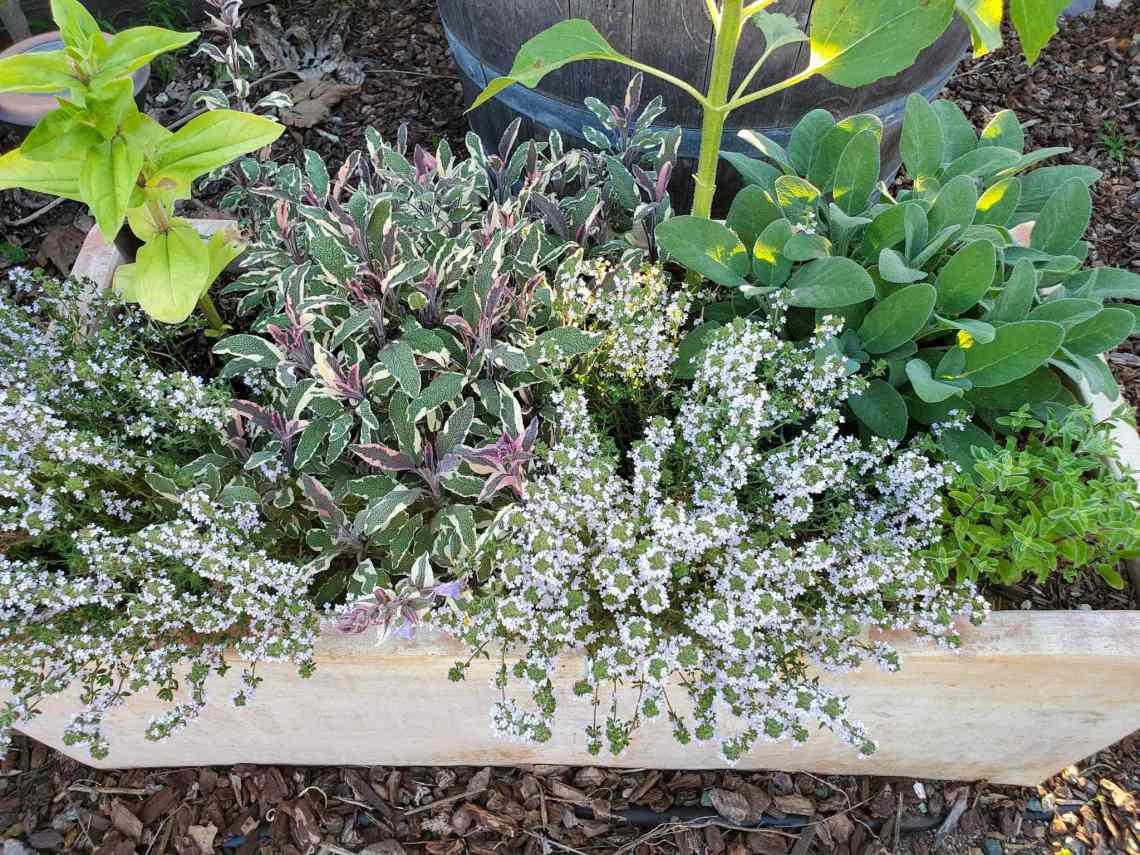Your cart is currently empty!

Tips For Growing Thyme From Seed

If you’re ready to start growing your own thyme, you might be wondering how you can make sure your plants are getting all the water, fertilizer, and sunlight they need. This article will cover some tips on how to get started and how to keep your thyme healthy.
Plant thyme in full sun
If you want to grow thyme, you can start with seeds. These tiny plants can be planted directly in your garden bed or a container. The best place to plant thyme is in full sun. This will help promote healthy growth, but it can also be a problem if you do not water the plant well.
You can also start a thyme plant from a cutting. Make sure that the roots of the cutting are intact, but it is not necessary to remove the entire stem. Instead, cut a length of the lower half of the leaf, then insert the cutting into a potting mix. Water the plant, then cover the twig with a thin layer of soil. Continue to keep it moist until the new growth begins.
Fertilize thyme
The thyme plant is a hardy herb that grows well in a variety of climates. It can be grown in garden beds, in containers, or indoors. While it is drought resistant, it does require regular watering.
To start a new thyme plant from seed, place the seeds in a loose seed-starting mix. The seeds will germinate in a few weeks, depending on the temperature. After the danger of frost has passed, thyme can be planted outdoors or in a container.
Thyme plants should be placed in a well-draining soil with a pH of between 6.0 and 8.0. When the plant is young, it does not need much fertilizer.
If you are going to be planting thyme in a pot, you will need to add a layer of mulch around the base of the plant to help retain moisture. However, over watering can lead to root rot.
Water thyme
Thyme is a perennial plant, but it can also be grown from seed. There are many varieties, including the popular thyme used in recipes, that are able to grow outdoors year-round in areas with mild winters.
For planting, thyme needs well-drained soil. It is also recommended that the soil has a pH of around 6.0-8.0. The best potting soil for thyme is a mixture of coarse sand and perlite. In addition, you can add a bit of organic matter to the soil.
If you are growing thyme from seeds, you should plant them in a place where they will receive full sunlight. They will germinate in 14 to 28 days. Water the seedlings with a spray bottle to help ensure proper germination.
Thyme is a fairly easy plant to propagate. It can be divided every two or three years. Alternatively, you can propagate it from cuttings. Before you do this, be sure to disinfect any equipment that will be in close proximity to the plants.
Avoid planting in soil that’s too dense or too rich
If you are thinking about growing your own thyme, the first thing you should do is determine if you have the right soil. Thyme does not grow well in very rich or dense soil.
The ideal soil for thyme is slightly sandy with good drainage. It also likes to have full sun and partial shade. You can either plant seeds in the garden or in containers.
In the garden, thyme plants should be watered regularly. They require more frequent watering than other plants. Water the leaves and the ground around the plant, but be careful not to soak the roots. This can lead to rot.
In the spring, when the danger of frost is over, thin out your thyme seedlings. Plant them at least 12 inches apart. Ensure that they have at least four true leaves.
Harvest thyme leaves
If you are growing thyme from seed, harvesting thyme leaves before the flowers open is a good way to get the most out of your thyme. The thyme plant grows well indoors and can grow year-round in cold climates.
Thyme leaves have a strong flavor. They can be used in soups, salads, and garnishes. When you harvest thyme leaves before the flowers open, you will also be able to keep the thyme for a longer time.
Growing thyme plants from seeds is easy. Sow the thyme seeds on a well-drained soil. It is best to choose a location that receives sunlight. Make sure to space the seeds about 4 inches apart. Once the seedlings grow, they should be transplanted into larger containers.
You can also propagate thyme plants from cuttings. Whether you’re starting from seed or a cutting, it’s important to treat your tools with disinfectant. Plants with thyme are susceptible to fungi and root rot, so you’ll want to be careful.
by
Tags: